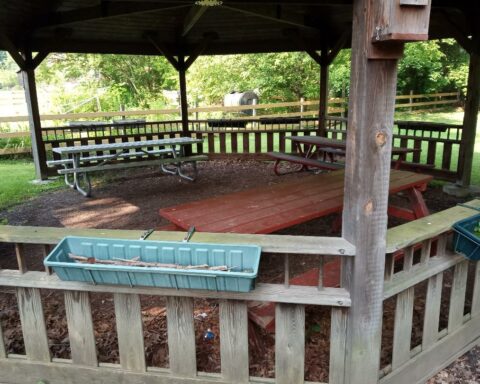We are seeing prices rise, sometimes shockingly, and shelves seem to be emptier by the week, which is why, like my furry little friend, I am stocking up for the long, cold months ahead and beyond.
I can drive from store to store looking for that elusive item to find blank spaces behind the descriptive sign that tells me it should be here. Or I can order from Amazon.
Many of the causes of inflation are responsible for rising prices and lack of availability.
Demand-pull inflation: This occurs when the demand for goods and services exceeds the supply, leading to higher prices. This can happen when consumers have more income, more credit, or more confidence to spend, all contributing to the rise in personal credit card debt.
According to the Federal Reserve, the average credit card debt per household is $14,241, and the average credit card interest rate is 22.16%.
It can also happen when there is a shortage of supply due to natural disasters, trade disruptions, or low productivity. Imagine how much more prices would increase if trade with countries like China, which exports more than $500 billion worth of goods to the U.S. yearly, was disrupted.
Cost-push inflation: This occurs when the costs of production increase, such as raw materials, wages, taxes, or regulations. The producers then pass on these higher costs to consumers by raising their prices. For example, if the price of oil rises, this will increase the costs of transportation, heating, and electricity for many businesses and households. This will then lead to higher prices for many goods and services that depend on oil.
This includes diesel fuel, which powers the trucks driven by nearly 2 million U.S. drivers. And then there are the smaller gasoline-powered vehicles that make many of our local deliveries. Fuel security, like food security, is essential to us on both a personal and national level. High oil prices can lead to supply failure and job losses.
Money supply inflation: This occurs when there is an increase in the amount of money in circulation relative to the amount of goods and services available. It can happen when the central bank prints more money, lowers interest rates, or buys government bonds. The demand for goods and services increases, while the supply remains unchanged or increases less than the demand. This creates an excess of money chasing too few goods, leading to higher prices.
The U.S. debt is projected to increase by $5.2 billion (with a b) every day for the next 10 years. Yet, we continue to print Monopoly money that is backed up by wishful thinking, an ever-growing credit card debt that cannot be repaid.
Devaluation inflation: This occurs when the value of a currency decreases relative to other currencies. It can happen when a country has a trade deficit, a high debt level, or a weak economic performance. This reduces the purchasing power of the currency, making imports more expensive and exports cheaper. It increases the demand for domestic goods and services, while reducing the supply of foreign goods and services, which leads to higher prices for imported goods and services, as well as domestic goods and services that use imported inputs.
The scary part is that as long as we rely on imports for our necessities, and fail to increase our self-sufficiency, we are at the mercy of countries upon which we depend for our needs.
Expectations inflation: This occurs when people expect inflation to rise in the future and adjust their behavior accordingly. It can happen when there is a history of high inflation, a lack of credibility in monetary policy, or a change in inflation targets. This increases the demand for goods and services today, before prices rise further tomorrow. It also increases the demand for higher wages and interest rates to compensate for the expected loss of purchasing power. This creates a self-fulfilling prophecy of inflation, as higher expectations lead to higher actual inflation.
Heavy stuff, I know. We can only ease this growing scenario by supporting fiscally conservative leaders, budget controls, and thoughtful domestic and foreign policy. And while our individual political leanings may differ, I’m sure most of our goals align. And until we are closer to reaching them, be well and stock up.









